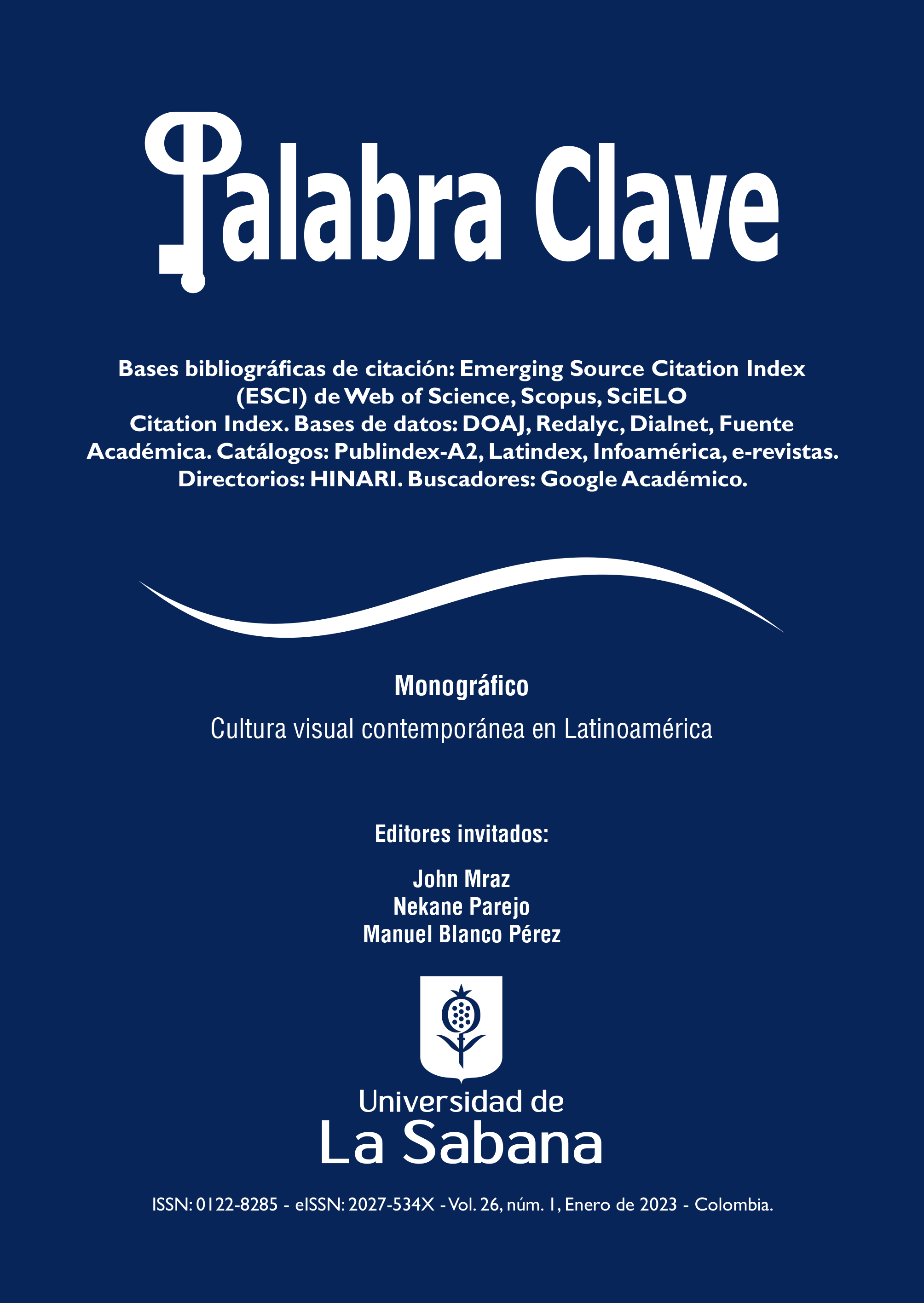The Affective Turn in Carolina Moscoso Briceño’s Subjective Documentary Night Shot (2019)
DOI:
https://doi.org/10.5294/pacla.2023.26.1.6Keywords:
Autobiography, self-portrait, documentary cinema, affective turn, subjectivityAbstract
Night Shot (2019), Carolina Moscoso Briceño’s film directorial debut, is a self-referential film, heterogeneous in its narrative forms and staging strategies. It is a documentary in which experimental modes are inserted. We asked ourselves about the type of work of the self to which it belongs (autobiography, self-portrait) and focused on the different narrating voices it uses. We also considered the subjectivity of the story and the affective turn that occurs without the story’s veracity being altered. We hypothesize that Night Shot is a story that belongs to a work of the self that, from the present, inquires into the near past so that the retrospective exercise serves the author as a way of understanding herself and as a form of denunciation. To build it, she adopts an emotional approach without questioning the veracity.
Downloads
References
Arfuch, L. (2016). El “giro afectivo”. Emociones, subjetividad y política. De Signis, 24, 245-254.
Bellour, R. (2009). Entre imágenes. Foto, cine, video. Colihue.
Bonorino, P. R. (2011). La violación en el cine. Tirant lo Blanch.
Calvo de Castro, P. y Marcos Ramos, M. (2018). La autorreferencialidad en el cine documental en América Latina. Vivat Academia. Revista de Comunicación, 145, 113-128.
Calvo Serraller, F. (2005). Los géneros de la pintura. Tauros.
Català, J. M. (2021). Posdocumental. La condición imaginaria del cine documental. Shangrila.
Cuevas, E. (2005). Diálogo entre el documental y la vanguardia en clave autobiográfica. En Torreiro, C. y Cerdán, J. (eds.), Documental y vanguardia (pp. 219-250). Cátedra.
Gálligo Estévez, F. (2021). Visión nocturna, un caso real de agresión sexual. Cinemagavia. https://cinemagavia.es/vision-nocturna-pelicula-critica/
Guarinos, V. y Sánchez-Labella Martín, I. (2021). Masculinity and rape in Spanish cinema: Representation and collective imaginary. Masculinities and Social Change, 10(1) 25-53. DOI: https://doi.org/10.17583/MCS.2021.5608
Hirsch, M. (1997). Family frames: Photography, narrative, and postmemory. Harvard University Press.
Horeck, T. (2004). Public rape. Representing violation in fiction and film. Routledge.
Jorquera Juacida, M. (2020). Visión nocturna. Las luces de lo violento, lo absurdo y lo real. LaFuga, 24, 1-3.
Joy, S. (2017). Sexual violence in serial form: Breaking Bad habits on TV. Journal Feminist Media Studies, 19(1), 118-129. DOI: https://doi.org/10.1080/14680777.2017.1396484
Lagos Labbé, P. (2011). Ecografías del “Yo”: documental autobiográfico y estrategias de (auto)representación de la subjetividad. Comunicación y Medios, 24, 60-80.
Lane, J. (2002). The autobiographical documentary in America. University of Wisconsin Press.
Lejeune, P. (1975). Le pacte autobiographique. Seuil.
Morera Hernández, C. (2014). Mujer, violencia y cine: la agresión masculina como estrategia narrativa. Journal Prisma Social, 13, 257-287. http://www.redalyc.org/pdf/3537/353744532008.pdf
Paranaguá, P. A. (2003). Cine documental en América Latina. Cátedra.
Parejo, N. (2010). La memoria fotográfica. Memento. Ámbitos. Revista Internacional de Comunicación, 19, 117-132. http://www.redalyc.org/articulo.oa?id=16820577007
Pérez Guevara, J. A. (2021). Visión nocturna, de Carolina Moscoso Briceño. 242 películas después. https://242peliculasdespues.com/2021/03/20/vision-nocturna-de-carolina-moscoso-briceno/
Piedras, P. (2014). El cine documental en primera persona. Paidós.
Ruffinelli, J. (2010). Yo es/soy ‘el otro’. Variantes del documental subjetivo o personal. Acta Sociológica, 53, 59-81. DOI: https://doi.org/10.22201/fcpys.24484938e.2010.53.24299
Sánchez Zapatero, J. (2010). Autobiografía y pacto autobiográfico: revisión crítica de las últimas aportaciones teóricas en la bibliografía científica hispánica. Ogigia, 7, 5-17.
Sibilia, P. (2008). La intimidad como espectáculo. Fondo de Cultura Económica.
Schefer, R. (2008). El autorretrato en el documental. Catálogos.
Schefer, R. (2011). Vi-deo memoria. Autobiografías, autorreferencialidad y autorretratos. La Fuga. http://www.lafuga.cl/vi-deo-memoria/451
Straccialano Coelho, S. y Camila Esteves, A. (2010). A narrativa autobiográfica no filme documentário: uma análise de Tarnation (2003), de Jonathan Caouette. Doc On-line, 9, 19-42.
Vásquez Rocca, A. (2012). Nicanor Parra: antipoemas, parodias y lenguajes híbridos. De la antipoesía al lenguaje del artefacto. Nómadas, vol. esp., 1-19. DOI: http://dx.doi.org/10.5209/rev_NOMA.2012.41775
Varela, F. (2009). Una vida de película. Reflexiones en torno a las nuevas presentaciones de la intimidad. Dixit: Revisita de Comunicación, 11, 26-32. DOI: https://doi.org/10.22235/d.v0i11.282
Young, J. (2000). At memory’s edge: After-images of the holocaust in contemporary art and architecture. Yale University Press.
Zumalde Arregui, I. (2012). Auctor in fabula. Modos y figuras de la autoalusión fílmica. Revista Signa, 30, 271-286.
Published
How to Cite
Issue
Section
License
Copyright (c) 2023 Palabra Clave

This work is licensed under a Creative Commons Attribution-NonCommercial-NoDerivatives 4.0 International License.
1. Proposed Policy for Journals That Offer Open Access
Authors who publish with this journal agree to the following terms:
- Authors retain copyright and grant the journal right of first publication with the work simultaneously licensed under a Creative Commons Attribution License that allows others to share the work with an acknowledgement of the work's authorship and initial publication in this journal.








